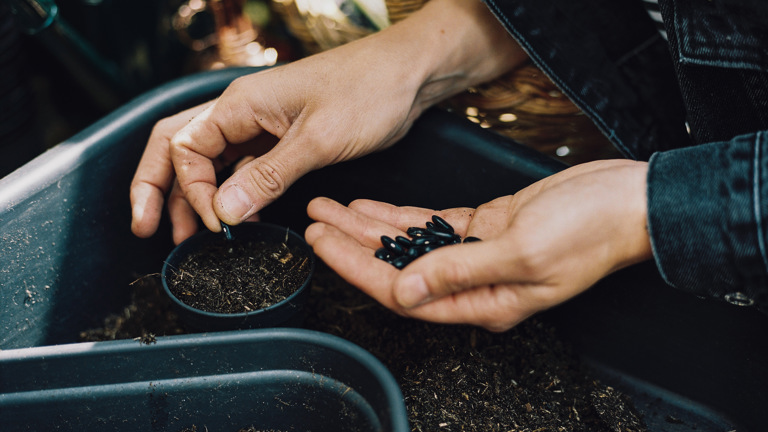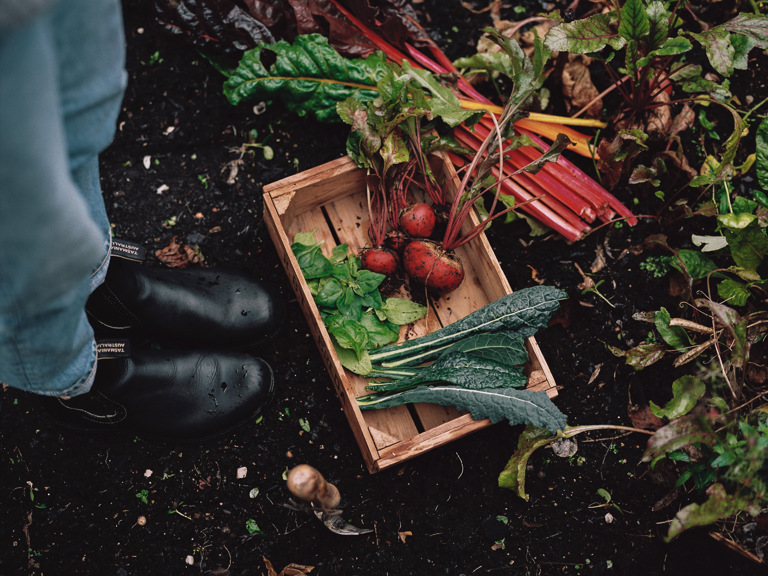
Getting started with your own vegetable garden even in late summer
Creating your own vegetable garden is a rewarding and therapeutic endeavor, even as summer transitions into fall. Not only does it contribute to your well-being, but it also fosters a deeper connection to nature and a heightened appreciation for the food you consume. The best part? You can embark on this journey at any time of the year. In this article, we'll guide you through the initial steps of setting up your own garden and provide insights into the tasks to tackle during the late summer months.
A Garden for All Seasons
Timing matters, but the good news is that starting a vegetable garden can be a year-round affair. While not all crops thrive throughout the entire year, and indoor sowing takes center stage in December, you can use our green basics grow kit all in 1.
Each month offers its own set of possibilities, even in the heart of summer, you can initiate your garden, setting the stage for a bountiful harvest in the upcoming fall or winter.


Just as in summer, the fall presents an ideal opportunity to commence sowing in your garden. Every month holds a fresh set of tasks and possibilities for your vegetable patch.
Selecting the Perfect Soil Foundation
Are you beginning your gardening journey now? Start by laying a solid foundation—healthy soil is the cornerstone of a successful harvest. The existing soil in your chosen gardening spot serves as the canvas for your green aspirations. Enhance it with a blend of nutrient-rich compost and well-balanced potting soil to provide the perfect growing conditions. If you're opting for raised beds or containers, consider opting for enriched organic potting soil, which comes with a three-month nutrient supply— sufficient for harvesting your crops in fall.

A fertile soil stands as one of the most crucial prerequisites for achieving a successful harvest.
Embracing Autumn's Harvest
Autumn brings with it a diverse array of crops that can be sown now and harvested during the cooler months ahead. Imagine delighting in the flavors of arugula, lamb's lettuce, kale, carrots, beets, bok choy, endive, or radishes. These varieties can be savored in their tender stages, requiring harvesting before the imminent frost. The cold weather bestows a unique sweetness upon items like carrots and beets, enhancing their flavors. You can opt for planting beets directly in the garden soil, or, if you prefer, make use of our innovative green basics potato pot.


Begin planting beets now for a winter harvest.
Seeking a quicker yield? Consider acquiring slightly larger plants from local nurseries or garden centers. This time-saving tactic ensures a delectable harvest within a mere month or two.
Beyond vegetables, the world of herbs also beckons. Whether nestled in your garden beds or gracing your terrace in decorative pots, herbs are a versatile addition. Space constraints? Our noa grow table makes balcony gardening a reality.
Herb plants serve as a prime example of crops you can acquire as plants from stores, providing you with a harvest throughout the entire season.
Opt for resilient herbs such as rosemary, sage, thyme, oregano, and bay leaf. These hardy herbs offer year-round harvests. For pre-frost abundance, embrace chives, parsley, and cilantro. Meanwhile, basil thrives indoors or in greenhouses due to its affinity for warmth. Extend the vitality of your basil plants with our bouncy basil pot.

Certain plants, like basil, thrive in warmth and are best cultivated indoors or in a greenhouse.
Nurturing Your Garden with Adequate Watering
Hydration is key, especially for recently transplanted seedlings and freshly sown seeds. As the days grow longer and the sun intensifies, water evaporates at a faster rate. Whether you're employing a watering can or a garden hose, always use a gentle rose attachment. This minimizes potential harm to your plants and prevents precious seeds from being washed away.
Embracing Late Summer & Fall Gardening Tasks
- Witnessing an insurgence of weeds? Shield your soil with a layer of wood chips. This simple step prevents weed seeds from accessing light, ultimately reducing your workload.
- October presents the ideal opportunity to plant onions and garlic. Whether in open ground or containers, their growth now promises a flavorful bounty next summer.
- Transition your strawberry dreams into reality by planting them in the fall. Whether in your garden or containers, these plants will bear fruits in the coming spring.
- After your garden's productive phase, consider fortifying the soil with nutrient-rich compost. This practice bolsters soil structure and infuses essential nutrients, ensuring robust growth in the seasons to come.
- Post-compost addition, ensure your soil remains nourished by topping it with a protective layer of mulch. This could encompass straw or wood chips, safeguarding your soil against excessive drying and supporting the continued vitality of beneficial microorganisms.
- Wrapping up the season, retire spent flowers and unproductive plants. These can be integrated into your compost heap, closing the loop on yet another successful gardening cycle.

Plant onions and garlic in October for an early summer harvest in July.